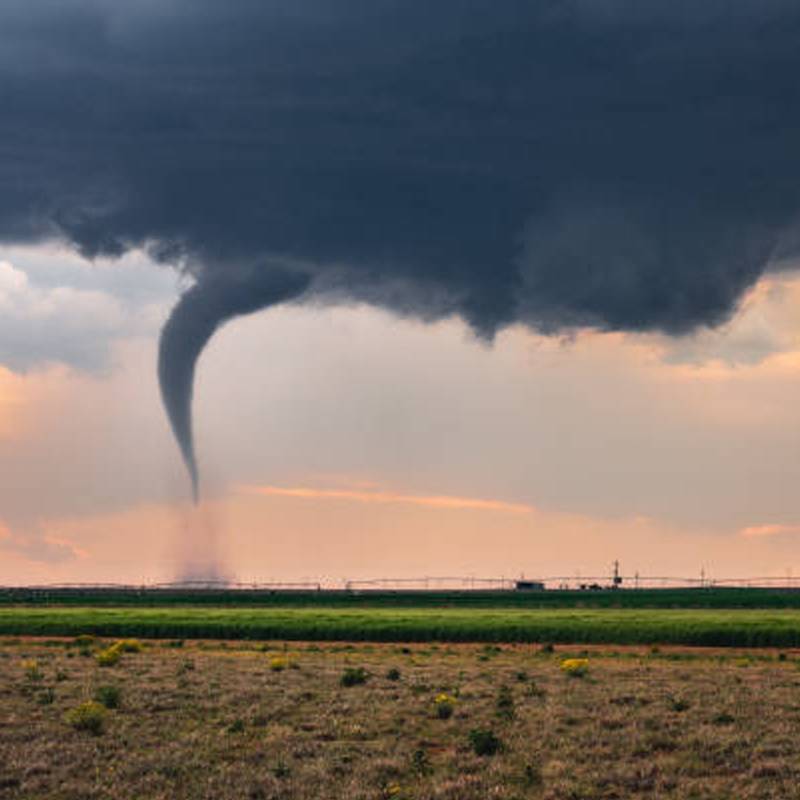Climate Dashboard
Climate change is a critical issue facing current and future generations. Scientific consensus agrees that human activity is the cause behind the rise in average global temperatures observed over the past century. Research studies show that limiting warming to below 2 °C (3.6 °F) compared to pre-industrial temperatures is vital to avoiding compounding feedbacks in the Earth system. The greater the amount of warming, the more severe the consequences, posing an even greater risk to water resources and global ecosystem stability and biodiversity. In 2015, 195 countries signed the Paris Agreement, which aims to keep warming to 1.5 °C (2.7 °F). Each country is responsible for reducing its greenhouse gas emissions through policy, technological, and natural solutions; however, recent climate budgets indicate that we are not taking the necessary steps to limit warming to 1.5 °C (2.7 °F). Current projections suggest 2.7 °C (4.9 °F) of warming by the end of the century with currently promised actions.
Texas poses a unique situation as it has one of the fastest-growing economies in the United States, with a significant portion being from fossil fuel energy production. Other big sectors like agriculture and municipal development are equally water and land-use intensive, leading to Texas being a high-impact state for climate change. Everything really is bigger in Texas; the effects of climate change on the state are both dramatic and consequential, but so too are the solutions. Thanks to its ideal geography and economic sectors, Texas has great potential to be a sustainable and renewable industry leader. Policymakers, educators, planners, and members of the public need to stay informed on these issues and solutions. While by no means exhaustive, this dashboard presents a comprehensive breakdown of the primary concerns from climate change facing Texas. This main page includes general resources and data portals encompassing all these topics.
-
Climate Data
The number of datasets online related to climate change is staggering. Those included here attempt to cover the essentials while providing access portals and various starting points for more specific and tailored climate data needs, both for Texas and beyond. Sources that offer useful visualizations and analysis tools were prioritized, as they are more accessible to a broader user base.
- Climate Action Tracker: Monitors and analyzes global greenhouse gas emissions and net progress towards meeting Paris Agreement climate change mitigation goals.
- Climate Attribution Database: Houses over 400 scientific studies related to the attribution of climate change to environmental impacts and feedbacks.
- Climate Clock: Gives a tangible countdown-style deadline for decreasing emissions to successfully limit warming to 1.5 °C (2.7 °F) compared to pre-industrial levels.
- Climate Change Resource Center: A handy collection of links to web-hosted data resources related to climate change curated by the U.S. Department of Agriculture and the U.S. Forest Service. These include links to data.gov, over 26 climate change indicators tracked by the EPA, the National Center for Atmospheric Research’s practical guide to climate data, the world’s largest archive of weather data at the National Oceanic and Atmospheric Administration’s National Climate Data Center, the World Data Centre for Greenhouse Gases, and various other national resources for tracking precipitation, snowfall, drought, meteorological processes, and climate change. The Climate Change Resource Center also has a tool list for model projections for future climate change scenarios with a focus on vegetation and wildlife impacts. National Center for Atmospheric Research’s website provides a climate data gateway for output from the Community Earth System Model, Mauna Loa Solar Observatory data, an archive of datasets from over 600 research studies, and a collection of tools for data processing and analysis.
- Climate Data Online: National Oceanic and Atmospheric Administration’s National Centers for Environmental Information provides a historical achieve of historical climate and weather data with comprehensive search, mapping, and analysis tools.
- Coupled Model Intercomparison Project Phase 6 access node: The Coupled Model Intercomparison Project Phase 6 is an international collaborative effort that aims to improve our understanding of Earth system responses and climate change feedbacks. CMIP6 projections are the most robust and up-to-date climate change simulations.
- Data.gov: Open climate data, tools, and resources hosted by the US General Services Administration. With over 330,000 unique datasets related to local, regional, and national climate conditions across the US, this is an important data tool to explore and utilize. Focus areas include—but are not limited to—coastal flooding, food resilience, water resources, tribal nations, ecosystem vulnerability, human health, energy infrastructure, transportation, and the Arctic. Some datasets are cross listed with National Oceanic and Atmospheric Administration resources and the Climate Resilience Toolkit. Still, many more are helpfully stored and easily discoverable by key terms, categories, period, type, organization/publisher, and spatial extent.
- Global Climate Dashboard: The National Oceanic and Atmospheric Administration houses and produces scientific datasets for monitoring climate conditions globally. It is the premier resource for national and regional data to study and make climate change adaptation and mitigation decisions.
- National Weather Service: Provides current and forecasted meteorological conditions at the county, state, and national scales for the United States.
- The Climate Atlas: An interactive web-based assessment tool detailing the benefits a specified land area receives from climate and biodiversity in the United States.
-
General Resources
The amount of information published each year on climate change and addressing its associated risks and vulnerabilities is vast. Instead of cataloging everything, the websites below are considered the best collections of climate knowledge at varying spatial scales to use, reference, and learn more from.
- Climate change affects all 7.8 billion people on this planet. Three essential climate resources for the world are the United Nations Environment Programme, the Intergovernmental Panel on Climate Change, and the United Nations Climate Action page.
- Climate Check: Generates a risk assessment for heat, fire, drought, and storm vulnerabilities for residential properties.
- Center for Climate and Energy Solutions: Focuses on advancing policy and action to reduce greenhouse gas emissions, accelerating the transition to clean and renewable energy, and improving resilient adaptation to climate impacts.
- Energy.gov: As fossil fuels are the driving cause of climate change through greenhouse gas emissions, priority needs to be given to the energy sector to mitigate future change and adapt to current and near-term impacts.
- Global Climate Change: National Aeronautics and Space Administration’s resource center with some of the best media related to understanding, teaching, and communicating climate change science.
- Office of the Texas State Climatologist (Texas A&M University) provides accurate climate data and reports to foster public awareness and inform stakeholder decisions related to climate impacts on Texas.
- Texas’ States at Risk page contains visualizations for all major climate change threats facing the state. Based on a national assessment of all states in 2015, this resource illustrates the top current and future risks related to extreme heat, drought, coastal flooding, wildfires, and inland flooding.
- While much research has been done on climate change, more is still needed. Luckily, new studies are regularly published every day. As our collective understanding of our highly complex planet continues to evolve, everyone shares a responsibility to stay up to date. Carbon Brief and Climate Central are dedicated to climate-related news and science publications. For local coverage, Texas Climate News is a great independent, non-profit, nonpartisan news source concentrating on climate and sustainability topics. Over 50 other local and international climate change news sources are compiled here.
-
Action
The pressing concerns of climate change can become overwhelming, especially as the window to meet the 1.5 °C (2.7 °F) goal is within this decade. While policy change is needed at global, federal, and state levels, the actions of individuals can help. The choice of which products to buy and the organizations you support can have a large impact and drive policy reform. While not exhaustive, here are some organizations to consider joining, supporting, and participating in that have local efforts in our Texas backyard:
- Citizen’s Climate Lobby: Empowers everyday people to help secure Congressional support for national bipartisan climate change solutions.
- Environmental Defense Fund: Protecting and making the environment we all live in safer and healthier, positively impacting climate change mitigation.
- Greenpeace: Encourages local and global community action to transition into a healthier relationship between humans and the planet we live on.
- Project Drawdown: A common misconception is that we lack the technological solutions needed to meet climate change goals. In reality, there are so many proven practices and technologies that just need to become more widespread. Project Drawdown’s guide is perfect for helping sort through what solutions are right for your local community.
- Sunrise Movement: A youth group organization focusing on stopping climate change and creating millions of jobs in the process.
- The Climate Group: Tackling sources with the highest greenhouse gas emissions to meet net-zero carbon goals by 2050. Focuses on developing networks that hold organizations accountable to their pledges and commitments on climate change.
- The Nature Conservancy: Some of the biggest milestones for climate change mitigation in the last decade have come about through land and water conservation efforts.
- World Wildlife Fund: An international non-profit enabling local communities to protect natural resources and prepare them for potential future climate disasters.












